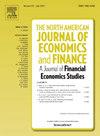Unveiling the crypto-green nexus: A risk management and investment strategy approach through the lens of NFTs, DeFis, green cryptocurrencies, and green investments
Abstract
This study focuses to examine the connectedness among the Green Investments, NFTs, DeFis & Green Cryptocurrencies, along with the portfolio diversification and hedging potential of the Green Investment against the other investments. We examined the connectedness using the Quantile VAR and Wavelet Quantile Correlation method, indicating the existence of the partial connectedness among the selected assets. The connectedness among the assets changes due to change in global uncertainty caused by Covid-19 and Russia-Ukraine war. The green investment offers the hedging benefits to other green investment. Among all crypto assets, Dai serve as a good hedge for the green investment and other crypto assets. MCoP is best performing portfolio with Sharpe ratio, followed by MCP. However, the investment as per MCoP and MCP approaches increases the volatility of green assets. Further, the hedging benefits are varying with the changing global dynamics. None of the approach gives positive cumulative return and Sharpe ratio to the investors during the Russia-Ukraine war period. Our study has implications for the investors and portfolio managers with respect to portfolio framing and fund allocation.

 求助内容:
求助内容: 应助结果提醒方式:
应助结果提醒方式:


